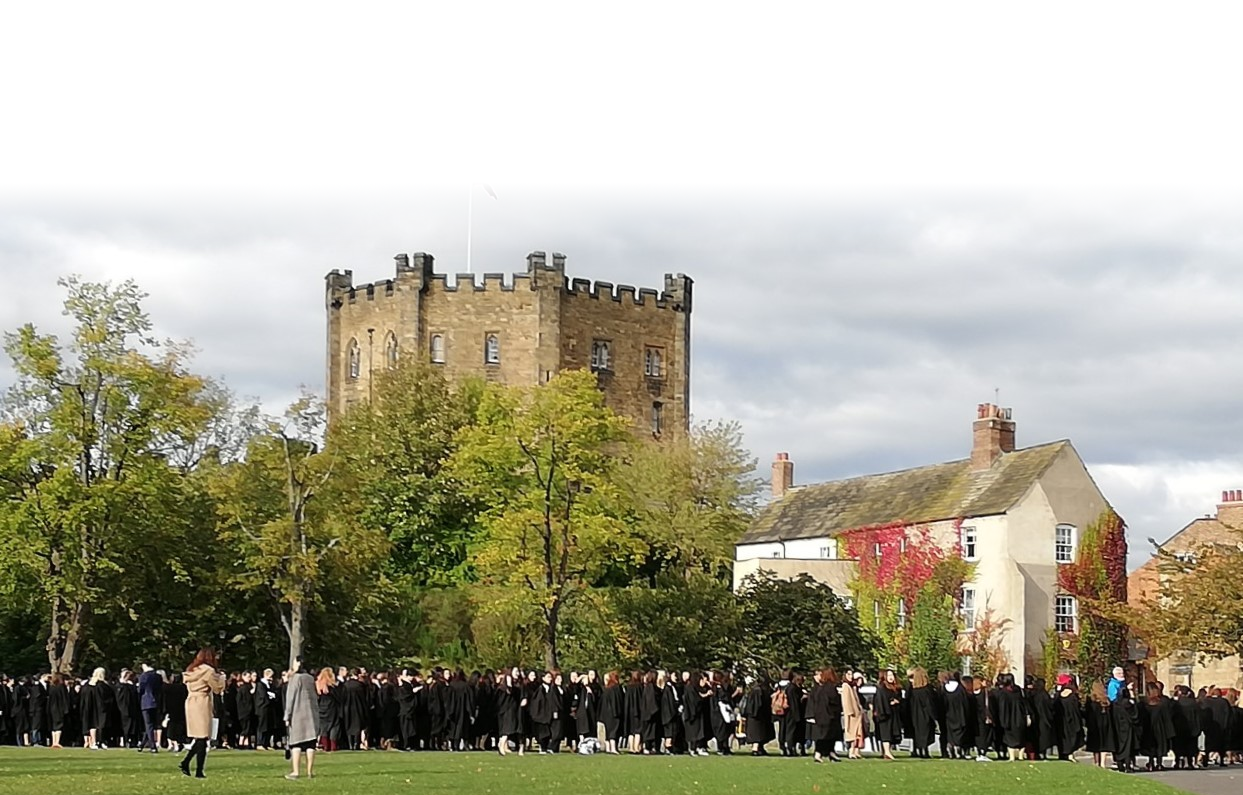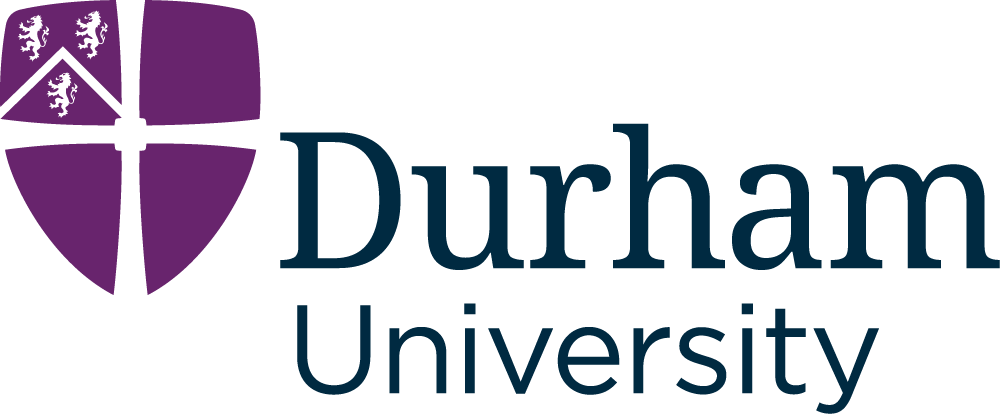

Spectral Theory and Partial Differential Equations
15 & 16 September 2021



Spectral Theory and Partial Differential Equations
15 & 16 September 2021

We are hosting a two-day meeting on "Spectral Theory and Partial Differential Equations" at Durham University on 15 - 16 September 2021.
This meeting is supported by the London Mathematical Society (via Scheme 9 grants - Celebrating New Appointments) and the Department of Mathematical Sciences at Durham University.
The official registration deadline has now passed but you may contact the organisers (see below) to discuss possible attendance.
We hope that it will be possible for this event to go ahead subject to any potential changes to Government and University regulations regarding the ongoing coronavirus pandemic. We will keep all registered participants informed on the status of the event via email.
Participants are required to take care of their own travel and accommodation arrangements. We suggest to book refundable rates in case the event has to be cancelled due to the pandemic.
We plan to hold the meeting in the Scott Logic Lecture Theatre MCS0001 in the Department of Mathematical Sciences. In case you have been to Durham University in previous years, note that we have now moved into a new building (together with Computer Science). We are now on Upper Mountjoy. You find the building on the map here. In the mornings and evenings there is a bus connection up to Upper Mountjoy, see the information and timetable here. The Scott Logic Lecture Theatre is located next to the main entrance on floor 0.
09:00 - 09:30: Arrival
09:30 - 10:30: Talk by Marco Marletta - Dissipation, repetition or oscillation: calculating eigenvalues of perturbed periodic operators in spectral gaps
10:45 - 11:45: Talk by Asma Hassannezhad - Nodal counts of the Dirichlet-to Neumann operators
11:45 - 13:30: Lunch break
13:30 - 14:30: Talk by Charles Batty - Bounded functional calculi for sectorial operators
14:45 - 15:45: Talk by Sabine Boegli - Non-selfadjoint Schrödinger operators with interesting eigenvalue pictures
16:00 - 17:30: Reception
09:30 - 10:30: Talk by Michiel van den Berg - Localisation for the torsion function and first Dirichlet eigenfunction
10:45 - 11:45: Talk by Michael Levitin - The Dirichlet-to-Neumann map and the boundary Laplacian
11:45 - 13:30: Lunch break
13:30 - 14:30: Talk by Katie Gittins - Do the Hodge spectra distinguish orbifolds from manifolds? Part 1.
14:45 - 15:45: Talk by Ingrid Membrillo Solis - Do the Hodge spectra distinguish orbifolds from manifolds? Part 2.
16:00 - 17:30: Reception (tea & coffee)
Title: Dissipation, repetition or oscillation: calculating eigenvalues of perturbed periodic operators in spectral gaps.
Abstract: In this talk I shall speak about work on numerical calculation of eigenvalues of perturbed
periodic operators which lie in spectral gaps (in the selfadjoint case) or in the essential
numerical range (in the non-selfadjoint case). The talk will compare dissipative barrier
methods, both concrete and abstract; supercell methods; and methods based on Floquet theory.
Parts of the work will be joint with collaborators including Salma Aljawi, Sabine Boegli,
Rob Scheichl and Christiane Tretter. I shall also mention some interesting single-author
works by my former postdoc Michael Strauss and my PhD student Alexei Stepanenko.
Title: Nodal counts of the Dirichlet-to Neumann operators.
Abstract: The zero set of an eigenfunction is called the nodal set and the connected components of its complement are called the Nodal domains. The well-known Courant Nodal domain theorem gives an upper bound for the nodal count of Laplace eigenfunctions on a compact manifold. However, almost nothing is known when we consider Dirichlet-to-Neumann eigenfunctions.
We discuss how this celebrated theorem of Courant can be extended for the Dirichlet to Neumann operators.
This is joint work with David Sher.
Title: Bounded functional calculi for sectorial operators.
Abstract: Many differential operators are sectorial operators \(A\) of angle less than \(\pi/2\);
equivalently they are (negative) generators of bounded holomorphic semigroups.
Large classes of operators have a bounded \(H^\infty\)-calculus, i.e.,
for each bounded holomorphic function \(f\) on the right half-plane,
there is a bounded operator \(f(A)\) associated with \(A\) in a natural way.
However some sectorial operators do not have a bounded \(H^\infty\)-calculus.
This talk will describe bounded functional calculi which apply to all sectorial operators \(A\)
but to restricted classes of functions \(f\).
This is based on joint work with Alexander Gomilko and Yuri Tomilov.
Title: Non-selfadjoint Schrödinger operators with interesting eigenvalue pictures.
Abstract: In this talk I shall present constructions of Schrödinger operators with complex-valued potentials in \(L^p\)
(for \(p\) sufficiently large) whose spectra exhibit interesting properties,
thereby settling several open conjectures about the possible location and accumulation rate of complex eigenvalues.
This is based on joint works with Frantisek Stampach and Jean-Claude Cuenin.
Title: Localisation for the torsion function and first Dirichlet eigenfunction.
Abstract: We discuss localisation phenomena for the torsion function and first Dirichlet eigenfunction on sequences of non-empty, open,
connected sets in Euclidean space with finite Lebesgue measure.
We show that localisation for the torsion function in \(L^1\) implies localisation for the first Dirichlet eigenfunction in \(L^2\).
Joint work with Dorin Bucur and Thomas Kappeler.
Title: The Dirichlet-to-Neumann map and the boundary Laplacian.
Abstract: We revisit the question of links between the spectrum of the Dirichlet-to-Neumann map and the spectrum of the boundary Laplacian.
Our approach is based on the method of multipliers, and in particular on identities associated with Rellich, Hörmander, and Pohozhaev.
The talk is based on the recent paper arXiv:2102.06594, joint with A. Girouard, M. Karpukhin, and I. Polterovich.
Title: Do the Hodge spectra distinguish orbifolds from manifolds? Part 1.
Abstract: A Riemannian orbifold can be thought of as a generalisation of a Riemannian manifold which has well-structured singularities.
As these singularities are a key feature of an orbifold, a natural question is: ``can spectral data detect the presence of orbifold singularities?''
We focus on the Hodge Laplacian acting on differential forms on compact Riemannian orbifolds without boundary.
We apply the heat invariants for differential forms to obtain that the spectra of the Laplacian for functions and 1-forms together can detect the presence of singularities
if the singular sets have codimension at most 3.
This is based on joint work with Carolyn Gordon, Magda Khalile, Ingrid Membrillo Solis, Mary Sandoval, and Elizabeth Stanhope.
Title: Do the Hodge spectra distinguish orbifolds from manifolds? Part 2.
Abstract: Orbifolds are locally the orbit spaces of effective actions of finite groups on \(\mathbb{R}^d\).
Because orbifold singularities, i.e. orbits with non-trivial isotropy, are defining characteristics of the class of orbifolds, one might ask:
(1) Do spectral data distinguish orbifolds with singularities from manifolds?
(2) What geometric and topological information on the set of orbifold singularities can be recovered from spectral data?
In this talk, using the heat invariants discussed in Part 1, we address both questions (1) and (2) for individual \(p\)-spectra.
For example, we give conditions on the codimension of the set of orbifold singularities which guarantee that the volume of the singular set
is determined by spectral data.
This is based on joint work with Katie Gittins, Carolyn Gordon, Magda Khalile, Juan Pablo Rossetti, Mary Sandoval, and Elizabeth Stanhope.
Sabine Boegli (sabine.boegli (at) durham.ac.uk) and Katie Gittins (katie.gittins (at) durham.ac.uk)